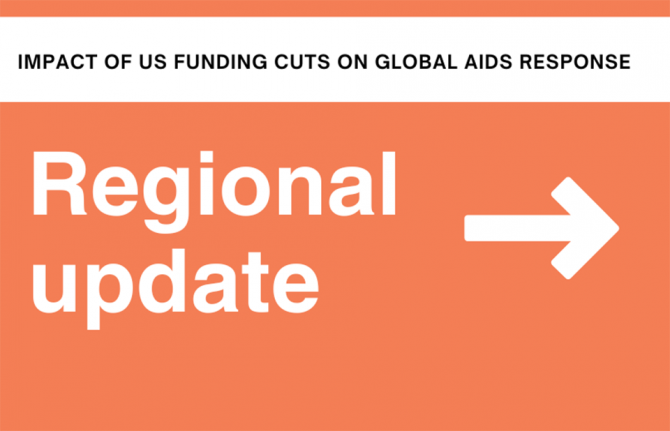
Feature Story
Resources for regular lab tests could be used for HIV treatment
11 September 2009
11 September 2009 11 September 2009
Vincent was one of the 3,316 DART participants and is also one of the main characters of The DART Story, a newly launched documentary film. Credit: Medical Research Council
Having 12 children and a very old mother to support, Vincent, middle-aged Ugandan single father living with HIV, knows that his death would spell disaster for the whole family. “If I had died, where would these people go?” said VincentN perched on a stool with his legs outstretched
Fortunately, Vincent has survived. He said it is DART that has saved his life. DART, the Development of Antiretroviral therapy in Africa, is the largest HIV treatment trial ever carried out on the world’s second most-populous continent.
The DART trial has recently reached a remarkable finding in HIV treatment: that taking HIV treatment does not have to be accompanied by regular laboratory tests, at least for the first two years.
James Hakim, professor of the University of Zimbabwe Medical School and co-principal investigator of DART, said the health economists in the DART team who have analyzed the trial data have concluded that a third more people could be successfully treated for HIV in Africa if expensive lab tests weren’t used routinely. “The challenge now is for policy-makers to widen availability of ART,” said the professor.
Before, it was believed that a person on HIV treatment should have regular tests, including CD 4 cell counts, a measure of how well the body’s immune system, which is damaged by HIV, is working.
The DART results show that 87% of people receiving HIV treatment without routine blood test monitoring were still alive and well after five years, only 3 percentage points less than in the group that had routine blood test monitoring. This finding suggests that many more people living with HIV in Africa could receive treatment for the same amount of money that is currently spent on routine lab tests used to monitor the effects of antiretroviral therapy.
It could also lead to antiretroviral therapy being delivered safely and effectively by trained and supervised health workers in remote communities where routine laboratory tests are not available due to high costs or poor resources.
Professor Peter Mugyenyi of the Joint Clinical Research Centre in Uganda, also a DART co-principal investigator, agreed that governments now have evidence that expensive blood tests aren’t needed routinely for HIV treatment to be successful and safe. “It also means that treatment could be delivered locally as long as health care workers have the right training, support and supervision,” said Peter, “This could make a huge difference to people who live in remote areas that are many days walk from the nearest hospital or laboratory.”
According to UNAIDS estimates HIV treatment only reached a third of the 9.7 million people in need at the end of 2007. In Africa alone, around 4 million people urgently need antiretroviral therapy but the resources are limited.
The DART Story
Aiming at finding a safe, simple and more economical way of carrying out HIV treatment, the DART trial began six years ago when treatment for people living with HIV was just starting to become more widely available in Uganda and Zimbabwe.
Vincent was one of the 3,316 DART participants that had severe or advanced HIV infection while not having previously had any antiretroviral therapy. He is also one of the main characters of The DART Story, a newly launched documentary film narrated by Annie Katuregye. The narrator herself, whose husband died of AIDS-related illnesses seventeen years ago at the age of 34, joined the DART trial in Uganda in 2003.
 Annie Katuregye joined the DART trial in Uganda in 2003 and is the narrator of the film The DART Story. Credit: Medical Research Council
Annie Katuregye joined the DART trial in Uganda in 2003 and is the narrator of the film The DART Story. Credit: Medical Research CouncilLike all the other DART participants, Annie and Vincent
randomly allocated to one of two groups. People in the first group received antiretroviral therapy and their doctor was given the results of blood tests done every three months to check for drug side-effects and measure their CD4 cell count. People in the second group had the same antiretroviral treatment and the same blood tests done, but their doctors did not see CD4 count results and only saw the results of safety tests if they were seriously abnormal. People in both groups received free medical care and free diagnostic tests for episodes of illness throughout the trial.
Besides the only 3-percentage-point difference in survival, 78% of the people who survived in the first group had developed no new AIDS-related illnesses, compared with 72% in the second group. No difference in the occurrence of side effects caused by antiretroviral treatment was found between the two groups.
Moreover, irrespective of group, the survival rate in the DART trial is amongst the best reported from any trial, antiretroviral therapy programme or study in Africa. Historical comparisons, based on data from follow-up of similar patients in Uganda who did not have access to antiretroviral treatment make it clear that few of the DART participants would have been alive after five years without treatment.
Sponsored and funded by the UK Medical Research Council, the DART trial was collaboratively carried out by scientists and health care workers from Africa and the United Kingdom. With an original purpose of finding out whether the lab-based strategies used to deliver antiretroviral therapy to people with HIV infection in resource rich countries were essential in Africa, DART has hit its target.
Resources for regular lab tests could be used for
Multimedia:
View video DART Anti-retroviral Trial
Feature stories:
HIV Treatment data update – July 2009 (23 July 2009)
Making HIV trials "work for women" (12 September 2007)
External links:
DART trial participants tell their stories (21 July 2009)
DART trial finds HIV therapy could be given safely without routine laboratory tests to save more lives in Africa (21 July 2009)
Publications:
Good participatory practice guidelines for biomedical HIV prevention trials (pdf, 733 kb.)
Antiretroviral therapy for HIV infection in adults and adolescents: Recommendations for a public health approach (pdf, 1.082 kb.)
Creating Effective Partnerships for HIV Prevention Trials (pdf, 182 kb.)
Ethical considerations in biomedical HIV prevention trials (pdf, 722 kb.)
Handbook on access to HIV/AIDS-related treatment (pdf, 2 Mb.)



